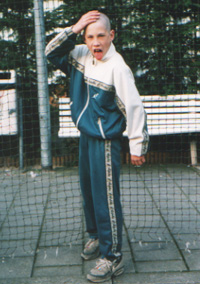After World War II, much of Europe is in ruins. People in Europe had experienced two world wars in three decades, many wanted peace and quiet and to try going back to the old order. Women who, during the war, had gone out to work would now stay at home. Some young people who had grown up during the war wanted to explore the newly won freedom. The young artist Constant Nieuwenhuys was one of these young people. He and his family went into hiding to avoid registering for ‘Kulturkammer’ (Nazi Chamber of Culture) so that he could continue to sell his art. When they hid in the house of Constant’s brother in law, his brother introduced Constant to philosophy. He began to read Karl Marx which would be a great source of inspiration for him later on.
1948 Constant created the international artist collective CoBrA. It was a collection of radical young artists from northern Europe who was against war, nationalism and militarism. They wanted to explore a new freedom through art and new perspectives through child- and folk art, mixing different materials and work collectively. Many of them were also Communists, who didn’t see it as the function of art to hang in the bourgeois homes. After CoBrA, Constant concentrated on his project New Babylon, creating models, collages and paintings to figure out what a post-marxist society would look like. His models show buildings that rise up on pillars from the ruins of the old capitalist society. ‘Homo Ludens’, man after a revolution, that no longer need to work as all the work had been automated by machines. He is no longer a worker but spend his own life and time for play. All land in New Babylon was owned collectively and the models show horizontal buildings for a horizontal community, and large open spaces as architecture was not to limit the spawning of Homo Ludens. Instead, it could constantly be modified to needs and desire.
In 1974 Constant gave up the development and presentation of the New Babylon project after nearly two decenniums of exploration. Many saw the project as utopian but for Constant it was a potential and real future. In the New Babylon society, people are connected through a large building that stretches around the world. A place where everyone can be received as mentioned by Mark Wigley, author of “Constant’s New Babylon: The Hyper-Architecture of Desire” a digital folder of the books content that we have got access to today –connected with our phones– and through which we can attain the content independent of place both during the day or at night.
When I went through the exhibition New Babylon at the Gemeentemuseum Den Haag, I thought of today’s socialism and the ideas that an alternative society is something strange and impossible. The ideology of today tells us that we live in the post-ideological era, liberal democracy won the cold war and so also the hegemony of ideological thought. We are told that we can move freely we can become anything if we work hard. Today Constant’s ideas seem naive and detached from reality ‘his idea is a utopia and today we have come to realize that we live in the best of worlds’. Today we are told that we are free. By calling something a utopia we take away its revolutionary strength, Constant is harmless because he hangs in an art museum. His models are ornaments from a naive era. When we leave the museum we leave the naive dreaming behind and come back to our “post-ideological” society.
We have acquired the freedom of choice in what we consume, but that is also as far as our freedom extends. Jens Nordfält, a doctor in store marketing, explains how the architecture of a supermarket is constructed to make us consume. At the entrance is placed freshly baked bread to make you hungry. In the back of the store is placed everyday goods that everyone needs so that one will go past many goods and increase the chance of spontaneous shopping. Placed by the checkout is sweets and cheap small goods that one can indulge in when one has been good and done ones weekly shopping. This is not play nor neutral and free from ideology, but instead reflects the capitalist utopia.


